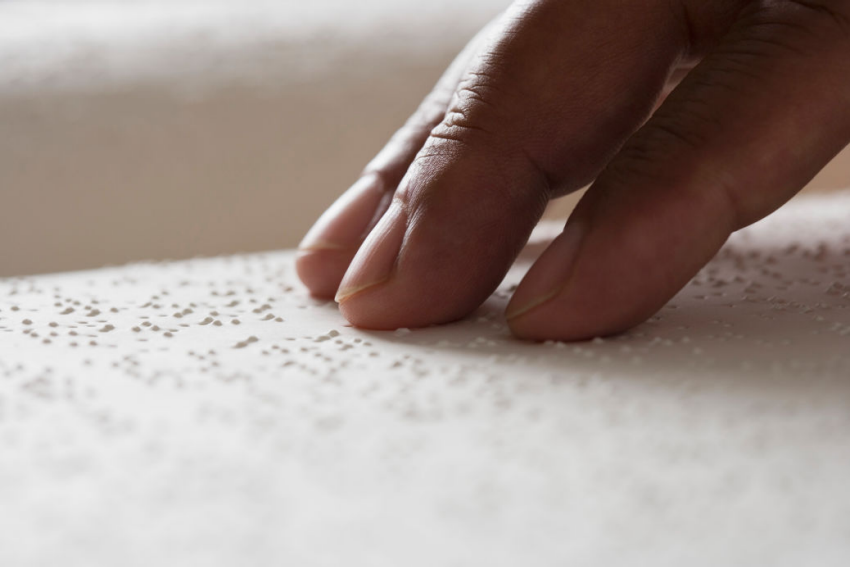
As many of us reflect on the Global Awareness Accessibility Day with our families, friends and colleagues, it is important to think on the role we all, as individuals, play in creating a more inclusive society. Over 1.3 billion people worldwide, comprising 17% of the global population, live with some form of disability, according to the World Health Organization. This number is constantly increasing due to a rise in chronic health conditions and population aging. Whether disabilities are temporary, situational, or permanent, the lack of accessibility can prevent people with disabilities from fully participating in society and can lead to exclusion from public goods, such as information, goods, and services.
Two sides of the same coin
Improving accessibility is not just a matter of social responsibility, it is also a business imperative. By prioritizing accessibility, CEOs can create a more inclusive workplace, build better products and services, and contribute to a more equitable and accessible world for everyone. Companies that invest in disability inclusion have been shown to gain a variety of benefits, including better financial performance and lower turnover – not to mention access to a largely untapped talent pool.
Even with great intentions, however, prioritizing accessibility and inclusion can be hard for any organization. In a recent World Economic Forum survey,* only 4% of global businesses reported prioritizing disability inclusivity, despite 90% expressing a commitment to diversity, according to The Valuable 500.
EU call for Action
As the world recognizes the responsibility and opportunity to include people of all abilities to experience life to the fullest, there are significant actions by governments and independent bodies to shape an inclusive world for the generations to come. The European Accessibility Act (EAA) is a market access Directive that significantly expands accessibility requirements for consumer-facing products and services offered in the European Union. It is an important part of our journey to include everybody, particularly the people with disabilities in the modern society. It regulates private sector offerings and applies to public sector procurement of EAA-covered products and services, expands what product and service categories are regulated, and defines what it means for a product or service to be accessible under several existing EU laws. As the requirements of European Accessibility Act will go into effect in June 2025, now is the time to start to prepare for the implementation.
Building the Ecosystem essential for the success
There are many examples where you lean into the accessibility ecosystem to move the needle, either to raise awareness or to inspire and promotion action towards closing the disability divide. I recently participated at the “Innovation for Accessibility Forum“ which gathered the representatives of the Estonian, Latvian, and Lithuanian Governments, and Public and Commercial sectors in March 2023 to discuss different initiatives on accessible digital solutions, as well as legislation compatibility with the European Accessibility Act. It was interesting for me to learn how different stakeholders approach to this topic.
According to Elīna Celmiņa from the Ministry of Welfare of Latvia, the EAA requirements are transposed in five different laws in Latvia, not only the Law on Accessibility of Products and Services but also Low on Conformity Assessment, Law on Electronic Communications and two Laws on Procurement Procedures, saying that business sector has been welcoming the EAA requirements and showing support.
Estonia is known as the leader in digital development and has proven that it is possible to redesign public services that are easy to use. Rasmus Eimla, Product Owner at Riigi Infosüsteemi Amet, Estonian Information System Authority was highlighting the usage of state Virtual Assistant – Burokratt, the Estonian AI projects which is listed in the global top 100 by UNESCO. Burokratt helps finishing everything in more effective way, and in the plan is to expand its features, such as implementing “the speech to text” and “text to speech” and sign language, as well.
Tilde is a leading European language technology company that develops AI-empowered machine translation and speech technology, as well as multilingual virtual assistants. Kaspars Kauliņš shared that Tilde has developed a speech synthesis solution that allows people to read physical books, tools to make websites accessible to people with disabilities – multilingual options and adding voice to the website content, including image descriptions, automatic subtitling for video content and more.

Closing the Disability divide with help of technology
It was heartfelt for me to realize the gap on accessibility in our technology sector, when I first heard that only 2% of websites worldwide are accessible to people with disabilities. At the same time the technology and AI can, and will play, a fundamental role in making the world more accessible and inclusive in the future. At Ability Summit, Microsoft reflected on many possibilities with the Seeing AI app using the power of Azure and AI to empower blind and low vision to navigate the world around them and improvements to Windows 11‘s like built-in screen reader, Narrator, to support more Braille displays. Today we see many innovations in fields of assistive technology, accessibility features, smart assistants, autonomous vehicles and predictive analytics. With AI based innovations we can enhance human cognitive abilities in thinking, reasoning, learning and communication. On the other side, the evolution of AI also comes with great responsibility and must incorporate and address a broad range of diverse human needs, barriers, capabilities and experiences.
Leaders signal importance and urgency
Wherever I look there is a strong belief that disability is a strength, one that is beneficial to organizations, offering greater innovation, improved business performance and broader appeal to attract and retain top talent. People need to be in the centre of everything we do, and technology can be a key enabler to expand opportunities for people with disabilities to thrive at work, school, and home.
Leaders signal importance and urgency around the prioritization of cultural initiatives for any organization. Leadership models differ from organization to organization, but when sponsors themselves are enthusiastic about the topic, they start a virtuous circle.
As I am looking forward to what the new technological advancements will bring towards shaping a more inclusive society, I am convinced nothing can replace human passion, drive and determination to drive change and make things happen.
Sources:
- Accessibility as a priority and responsibility – CEE Multi-Country News Center (microsoft.com)
- Empowering People with Disabilities: Tilde’s Innovative Language Technology Solutions – CEE Multi-Country News Center (microsoft.com)
- State of Accessibility in Baltics: How to Move Forward – CEE Multi-Country News Center (microsoft.com)
- Microsoft’s Annual Ability Summit: Exploring the technology, people, partnerships and policies driving a more accessible future – Microsoft On the Issues
- The inclusion of people with disabilities makes us stronger as a society – CEE Multi-Country News Center (microsoft.com)





